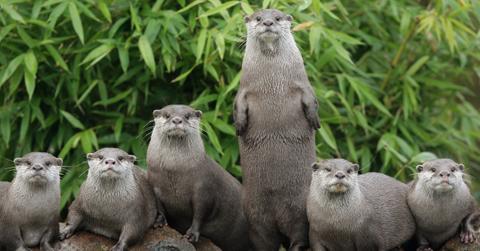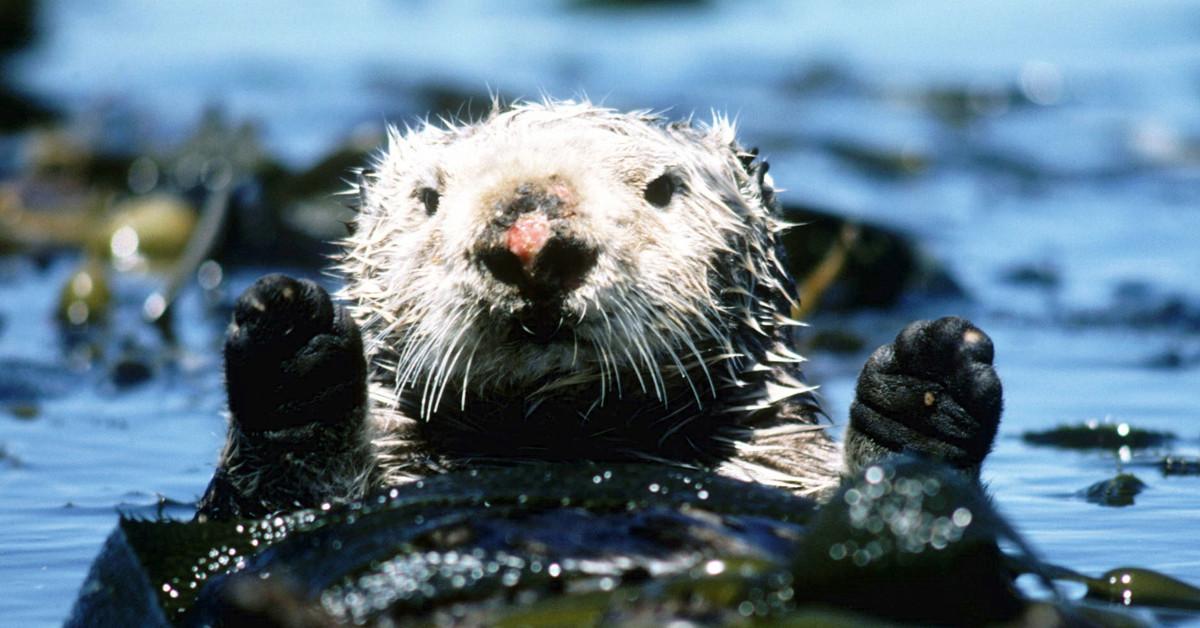Female Otters Have Nose Scars Because They Engage in Some Rough Mating Rituals
Published June 3 2022, 4:40 p.m. ET

So there you are scrolling through Instagram when boom: You're hit with an adorable video of an Otter dancing to Beenie Man's "Who Am I." Before you know it, you're an hour and a half behind in work after going down the rabbit hole of cute/strange animal videos and learning facts about them which, quite frankly, provide more information than you ever cared to learn.
Like the answer to a question a lot of people have about female otters. Namely: Why do they all seem to have scars on their noses?

Why do female otters have scars?
Throughout your research of the cute, whiskered, slinky little carnivores, you may have noticed that in quite a few pictures of female otters, a lot of them have pink, gnarled noses instead of the black ones typical of otters. So why do they have so many scars?
Well, a lot of that has to do with the mating rituals of otters. Male otters tend to get extremely aggressive when they're cavorting about with potential matches. They will bite down on parts of a female's neck or, in many instances, their noses when they're in the throes of courtship.
Foreplay for otters tends to look a lot like a competitive swimming match with tons of lunging after one another, circling around in the water, and twisting around. According to the folks at Seaworld, "A male approaches a female and attempts to embrace her with his forelegs or rub and sniff her body. If she is receptive, the two roll and frolic; if not, she will push him away. Copulation is preceded by vigorous play — chasing, swimming, diving, twisting, cork-screwing, and lunging."
And yes, there are mentions of the whole nose-biting thing: "In some species, the male bites the female's upper jaw or nose, in other species the male grasps the female by the scruff of the neck. Copulation takes place in the water, and lasts 10 to 30 minutes. When a male sea otter finds a receptive female, the two engage in playful and sometimes aggressive behavior."
The site continues, "The male often grasps the female's nose in his teeth, causing it to become swollen and bloody. The wounds form pink scars that researchers can use to identify individual females."
In fact, otters' mating rituals can tend to get a bit murderous. Tree Hugger writes:
"When it comes to mating, male sea otters are aggressive. The males will grasp the female, then bite down onto her nose and hold on, usually resulting in deep cuts and gouges, sometimes with pieces of flesh torn away. The two spin in the water until mating is finished and the male releases the female. This can sometimes result in the death of the female, either from physical trauma or even drowning."
There are even more dark facts about otters.
If this seems kind of violent and a bit shocking, there are some other pretty brutal facts about otters not many people know.
If you search for "otters attacking people," you'll find that there are tons of stories spanning several years that tell of otters going buck nasty on members of our species. In fact, in 2021, one group of river otters went about attacking dogs and people in Alaska, for seemingly no reason at all.
Maybe they just wanted folks to stay away from "their turf," or it could just be that otters are known to be no-holds-barred when it comes to other animals. There's footage of a group of them killing a monkey they shared a zoo enclosure with. And then there was an otter that murdered a dog and kept its carcass around to use as a sex toy.
Male otters will also hold a mother's baby hostage until she gives up her food. In 2019, Vox reported biologists Randall Davis and Heidi Pearson as writing: "A male approached a pup floating on the surface while its mother was diving for food. The male forced the pup underwater as if trying to drown it. When the female surfaced, the male stole her food (a clam), after which the female and pup quickly departed."